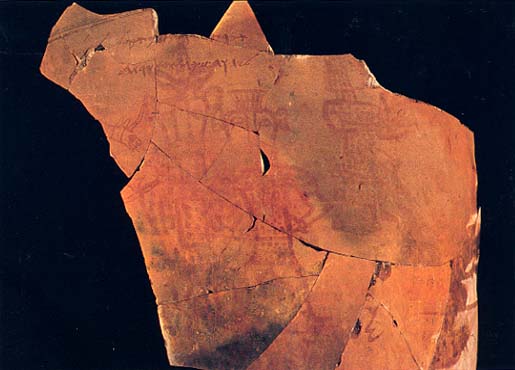Image Details

Avraham Hai
At first, the excavator of Kuntillet Ajrud, Ze’ev Meshel, thought that the word asherah on this sherd could mean a goddess, consort of Yahweh, and that the three crudely drawn figures could be interpreted as Yahweh, far left; his consort, the seated lyre player, far right; and, in the center, the Egyptian demigod Bes, identifiable by his feathered headdress and his pose of arms akimbo. But now, a recently published interpretation by Pirhiya Beck concludes that both standing figures are representations of Bes, while the lyre player is not a goddess, but just a musician. Both Bes and the lyre player are common iconographic motifs on Syro-Phoenician artifacts such as seals and ivories, especially those dating to the eighth century B.C.
Thus, it seems that a meaningful relationship between the inscription and the figures on the Kuntillet Ajrud vessel is unlikely, although one scholar, William G. Dever, who initially published the Khirbet el-Kom inscription discussed in the text, is reportedly about to publish an article defending the identification of the seated lyre player in the picture as Yahweh’s Asherah.
